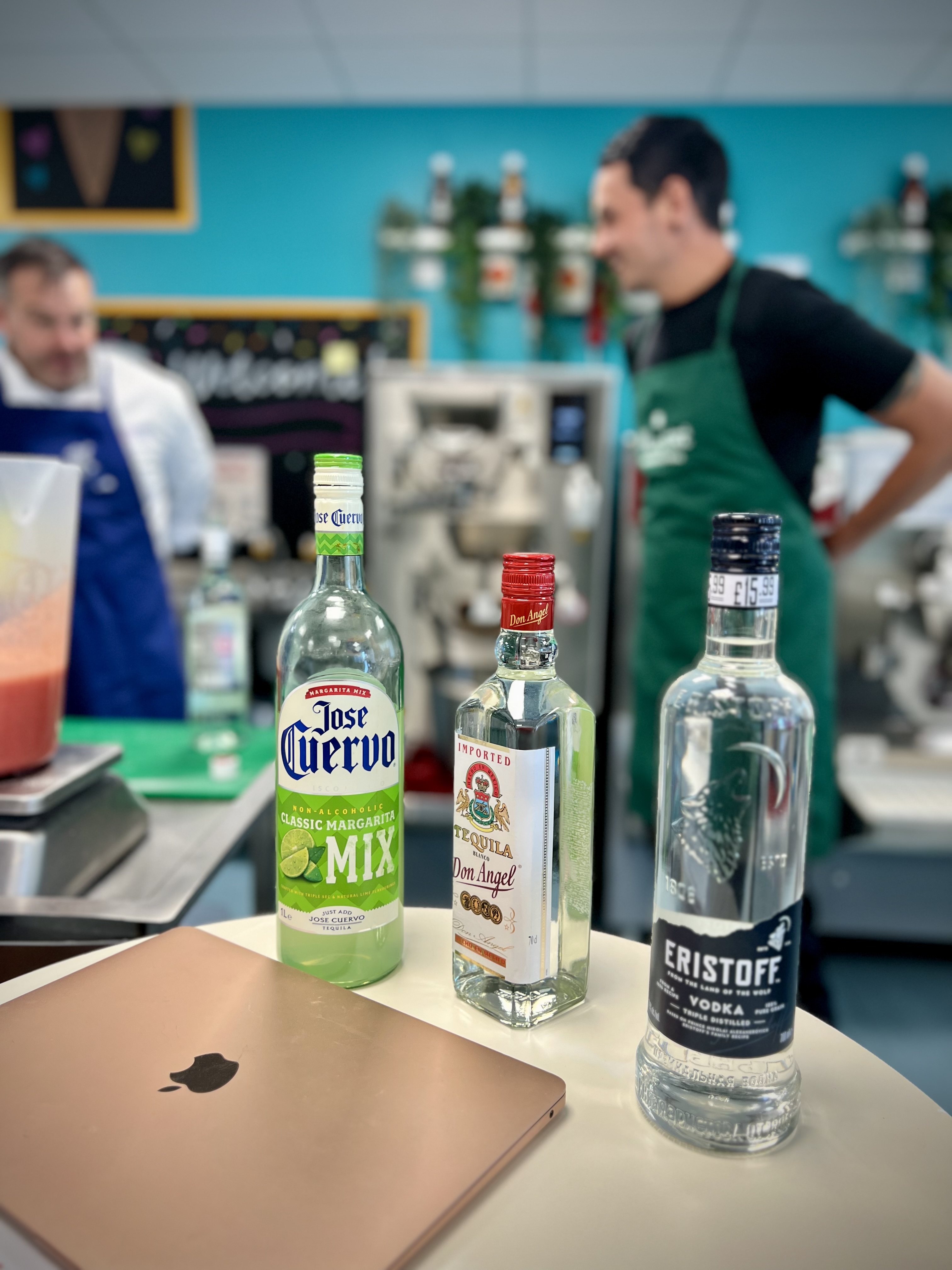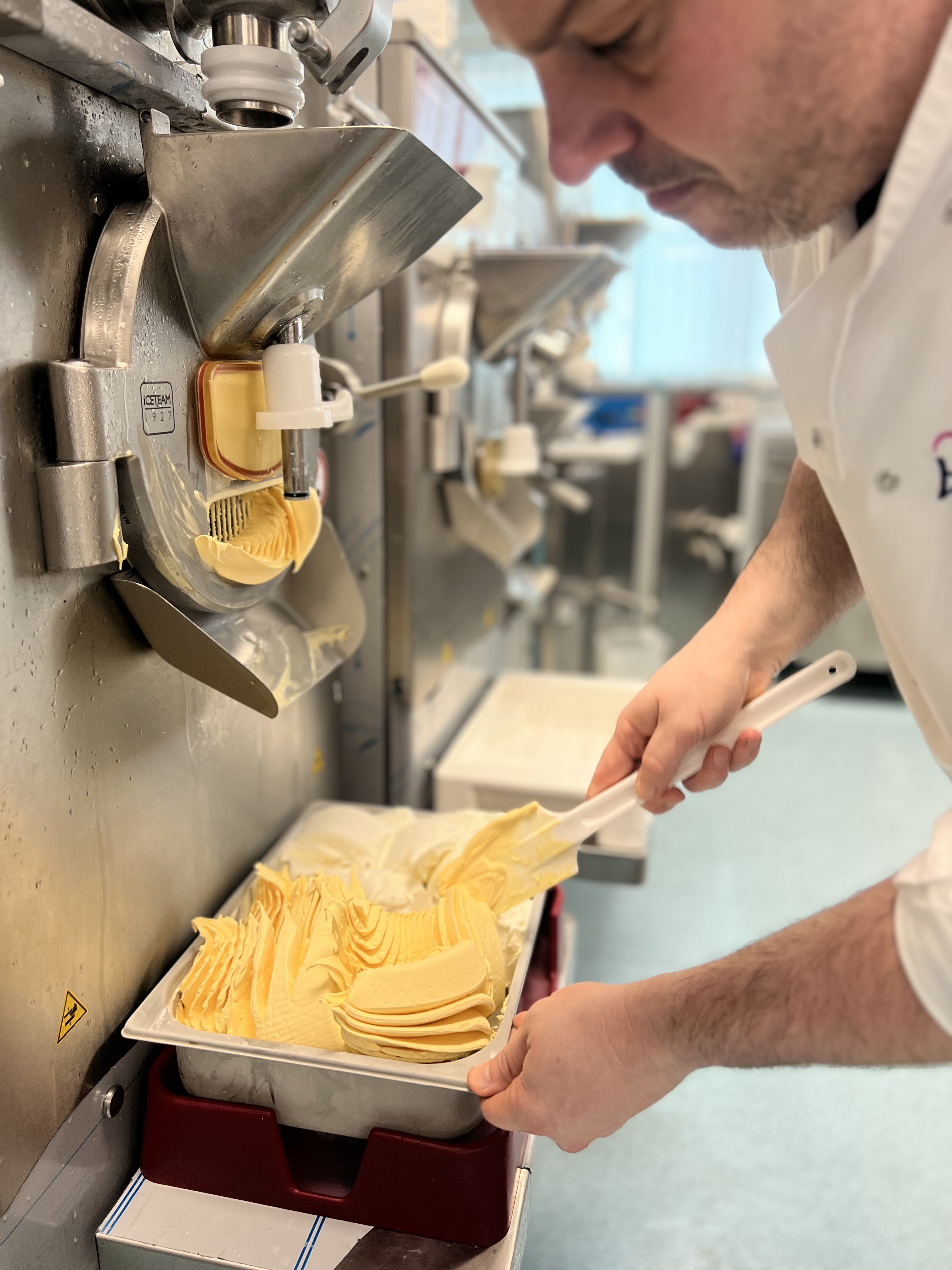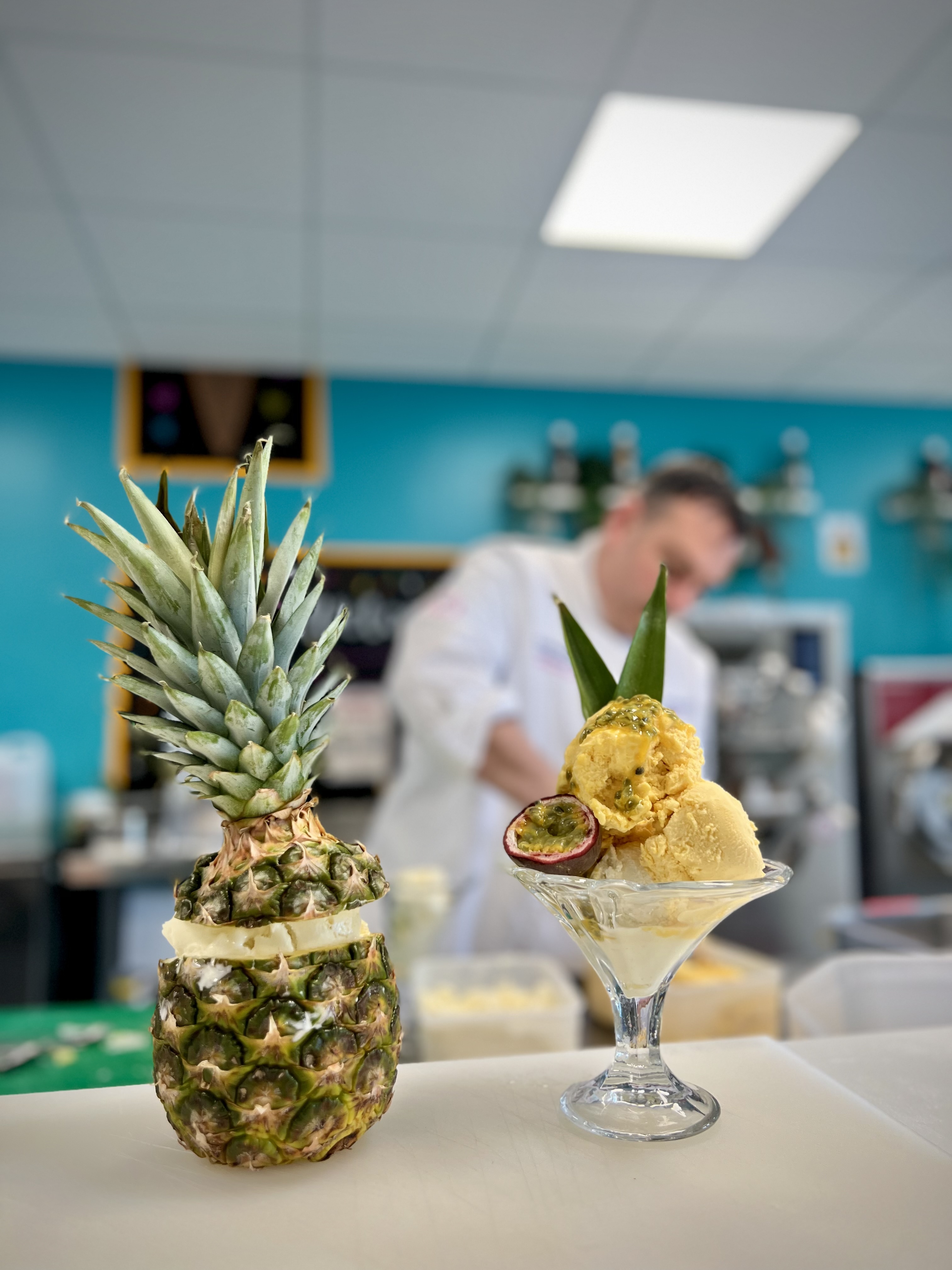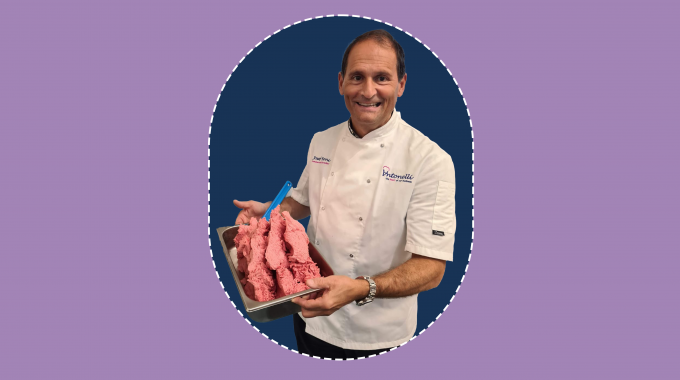During my years in the industry, I’ve answered a range of ice cream-based conundrums. From building bases to balancing sorbets, and even decorating, I’ve been involved in it all.
In the past few months as Antonelli’s new Gelato Technical Manager, I have been surprised how many customers have asked me to help them create alcoholic gelatos and sorbets.

Why are alcoholic gelato and sorbets so popular?
Events appear to be the main driving force behind frozen alcoholic creations! More of Antonelli’s customers are supporting festivals, weddings and parties than ever before, and this means supplying ice cream and sorbet that appeal predominantly to adults rather than children.
Now, I’m not saying that adults don’t enjoy a vanilla, pistachio or even dare I say it… blue bubble gum, but whether they’re looking to dance to their favourite band or celebrate a wedding, alcohol appears to be a popular choice! And the more innovative ways of consuming alcohol, the better!

How to create alcoholic gelato and sorbet
So, if you would like to offer your gelato and sorbet with a little kick, these are my top tips for manufacturing commercially:
> Maltodextrin & Inulin - Both are used to absorb loose water and maintain a firmer product whilst keeping your total solids up for a balanced structure. A higher level of antifreeze in alcohol means that we need to find ways to counter extra loose water. As these two powders mostly have hydroscopic behaviours, they help to balance the antifreeze.
> ABV – ABV (Alcohol by Volume) refers to the total amount of alcohol in a drink or product. Most spirits work on around 40% ABV, beers and ciders 4.5% ABV and wine around 12% ABV as a generalisation. In my recipes, I try to work to a maximum of 4% total ABV. This is because anything higher becomes very difficult to balance the structure and the flavour of the alcohol starts to come through as ethanol.
> Solids - We still want to be aiming for the same parameters as non-alcoholic ice cream and gelato on our total solids, but our other solids will be significantly higher due to the extra inulin & maltodextrin. The sugars will be lower due to the extra antifreeze from the alcohol.

What are the challenges of making alcoholic gelato and sorbet?
Despite being delicious, there are several challenges to consider when producing a boozy scoop. These are:
1. Commercial cost - On top of your usual ingredients, you also need some special guests…
> Maltodextrin & Inulin - These usually replace some sugar that has come out of the recipe and can cost significantly more.
> Alcohol licence - These aren’t cheap and not worth having unless you are serving boozy treats year-round and making good profit. Not even most pubs can survive on just drink sales! Don’t worry though, your Rum & Raisin is safe as nearly all pastes I have experienced are well below the requirements for a licence.
> The alcohol itself - whether it’s beer, wine or spirits, these ingredients are significantly higher in cost, pricing up your gelato significantly.
2. Less air - The higher the ABV, the denser your product will be. Where most will aim for up to 100% overrun on a continuous freezer, or up to 30% on an artisan batch, anything over 5% ABV will hold limited amounts of air.
3. Shelf life – Where a pasteurised ice cream product would usually last anywhere between 6 and 24 months depending on the recipe and process, when we bring alcohol into the equation, shelf life can be significantly lower. After a month, you may start to see water loosen from the recipe and form ice – the likeliness of this increasing the higher the ABV.

So, you want to make alcoholic gelato and sorbet?
If you would like to learn more about balancing alcoholic recipes, make sure you check out our Gelato Training Academy website for dates.
I’ll see you next time for the latest scoop!
Antonio


